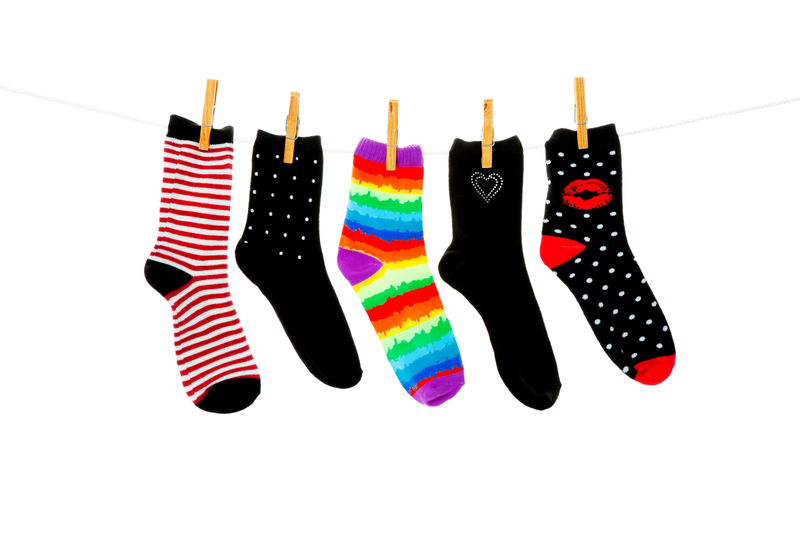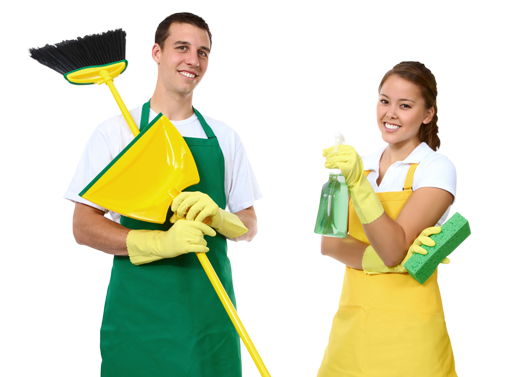Efficient Ways to Restore Your Stovetop's Shine and Remove Burnt Residue
Posted on 22/05/2025
Efficient Ways to Restore Your Stovetop's Shine and Remove Burnt Residue
Maintaining a sparkling, spotless stovetop is a hallmark of an organized and hygienic kitchen. Yet, over time, burnt residue, stubborn grease, and unsightly stains can accumulate, diminishing the stovetop's brilliance and functionality. Fortunately, with the right knowledge, tools, and approach, you can restore your stovetop's shine and efficiently remove burnt residue -- no matter the severity of the mess. In this comprehensive guide, we'll explore proven methods and expert tips to effortlessly rejuvenate your cooktop, whether it's gas, electric, or glass-ceramic.

Understanding Your Stovetop: Types and Cleaning Needs
Before diving into cleaning techniques, it's vital to recognize the type of stovetop you have, as various surfaces require different care processes.
- Gas Stovetops: Typically feature removable grates and burners that accumulate food spills and splatters.
- Electric Coil Stovetops: Feature raised spiral coils that can harbor char and burnt-on debris below drip pans.
- Glass or Ceramic Stovetops: Have a smooth, sleek surface that is prone to scratching if not treated properly.
Identifying your stovetop type ensures you select the most efficient cleaning method and avoid inadvertent damage.
Why Regular Stovetop Cleaning Matters
A dirty stovetop isn't just an eyesore; it can:
- Impact cooking performance by causing uneven heat distribution and affecting taste.
- Attract pests due to lingering food debris.
- Shorten the appliance's lifespan because of residue-induced corrosion.
- Cause safety hazards by increasing the risk of kitchen fires from built-up grease.
Routine maintenance is key to preserving stovetop shine and hygiene.
Step-by-Step Guide: How to Restore Your Stovetop's Shine and Remove Burnt Residue
General Preparation Tips
- Always unplug electric coils or turn off gas supply before cleaning.
- Let the surface cool down completely to prevent burns.
- Remove any loose food particles with a dry paper towel.
- Gather your supplies: gentle sponges, microfiber cloths, soft-bristled brushes, baking soda, dishwashing liquid, white vinegar, scraper (for glass cooktops), and specialized stove cleaner.
Cleaning Gas Stovetops Efficiently
Gas stovetops have several components: grates, burners, and the main surface. Here's how to achieve a brilliantly clean finish:
-
Soak Removable Grates and Burner Caps:
Place them in a sink filled with hot, soapy water. Let them soak for 15-25 minutes to loosen burnt food and grease. -
Scrub Away Residue:
Use a non-abrasive sponge or an old toothbrush to scrub off charred residue. For stuck-on bits, make a paste with baking soda and water, apply it, and let it sit for 20 minutes before scrubbing. -
Degrease the Surface:
Wipe down the stovetop with a mixture of equal parts white vinegar and water. This not only breaks down grease but also restores a natural shine. -
Clean Burner Heads:
Use a toothpick or pin to unclog any holes in the burners. Avoid using sharp objects that might enlarge the holes. -
Dry and Reassemble:
Dry all parts thoroughly before reassembling to prevent moisture and rust.
Repeat weekly for a consistently radiant gas stovetop.
Cleaning Electric Coil Stovetops
- Remove Coils and Drip Pans: Unplug coils (if possible) and remove drip pans.
- Wash Drip Pans: Soak in hot, soapy water. Use a paste of baking soda and water to tackle burnt stains, then rinse and dry.
- Clean the Coils: Wipe the coils gently with a damp cloth. *Avoid soaking or submerging electric elements*.
- Address Stubborn Burnt-on Residue: For hard-to-remove char, lay a hot, wet towel over it for 30 minutes to loosen, then clean with a sponge.
- Wipe the Main Surface: Clean with vinegar-water spray or stovetop cleaner, then buff with a microfiber cloth for maximum shine.
Restoring Glass and Ceramic Stovetop Shine
Glass and ceramic stovetops require special care to avoid scratching the delicate surface. To remove burnt residue and restore brilliance:
- Sprinkle Baking Soda: Cover burnt areas generously.
- Apply Hot, Soapy Towels: Lay a towel soaked in hot, soapy water over the stains and let it sit for 15-20 minutes.
- Wipe and Scrape Gently: Use a microfiber cloth to wipe off loosened residue. For persistent spots, gently scrape with a plastic scraper or a specialized glass scraper at a 45-degree angle.
- Polish for Shine: Finish by applying white vinegar or a dedicated glass stovetop cleaner, buffing until the surface gleams.
Never use steel wool or abrasive pads on glass and ceramic cooktops.
Natural Homemade Solutions for Stovetop Cleaning
If you prefer eco-friendly approaches, these homemade cleaners are safe, effective, and budget-friendly:
- Baking Soda Paste: Mix 3 parts baking soda to 1 part water. Spread over burnt residue, allow it to sit, then scrub.
- Vinegar Spray: Fill a spray bottle with equal parts water and vinegar for dissolving grease and imparting shine.
- Lemon Power: Lemon juice's acidity helps break down stubborn spots, while its scent freshens the cooking area.
Test these mixtures on a small area first to ensure compatibility with your stovetop material.
Advanced Techniques for Stubborn Burnt-on Food and Residue
Sometimes, ordinary cleaning doesn't suffice. For heavily burnt residue:
- Use a Commercial Degreaser: Products formulated for kitchen appliances demolish tough grease and char. Follow manufacturer instructions carefully.
- Razor Blade for Glass Tops: Carefully use a new razor blade (held at a shallow angle) to lift off hard, burnt bits on glass/ceramic surfaces -- never apply excessive force as it could cause scratches.
- Ammonia Fume Method (for Grates): Place the grates in a sealable bag with 1/4 cup ammonia. Let sit overnight, then rinse thoroughly (ensure proper ventilation when using ammonia).
- Baking Soda and Peroxide (for White Surfaces): Apply a paste of hydrogen peroxide and baking soda, allow to bubble, then scrub gently. Rinse well.
Wear rubber gloves and ensure proper airflow while using chemical cleaners or ammonia.
Pro Tips to Prevent Burnt Residue and Maintain Stovetop Brilliance
Prevention saves elbow grease and time. Implement these simple habits:
- Wipe spills immediately while they're still warm (not hot) to prevent hardening.
- Use burner liners or drip pans (where suitable) to catch overflows.
- Deep clean weekly for best results, even if the stove looks clean at a glance.
- Avoid using metal utensils to scrape burnt food off glass or ceramic tops--use only approved scrapers.
- Polish for shine after every deep clean with a little vinegar or specialized stovetop polish, buffed with a microfiber cloth.
Best Products for Restoring Stovetop Shine
While homemade solutions are highly effective, sometimes a commercial cleaner brings next-level results. Here are writer-tested favorites:
- Bar Keepers Friend Cooktop Cleaner: A non-abrasive formula for glass and ceramic surfaces, easily removes burnt stains.
- Weiman Glass Cook Top Cleaner: Known for its streak-free shine, great for removing tough, burnt-on residue.
- Mr. Clean Magic Eraser: Effective for stubborn marks on electric and gas stove surfaces.
- Zep Heavy-Duty Cleaner/Degreaser: Great for grates, burners, and greasy metal surfaces.
Follow each product's guidelines and always perform a spot test first.

Common Mistakes and Stovetop Cleaning FAQs
Stovetop Mistakes That Damage Shine and Surface
- Using steel wool or abrasive pads on smooth glass or ceramic surfaces (causes scratches).
- Cleaning when surfaces are hot (risk of burns, and cleaners may evaporate before working).
- Neglecting crumbs and spills under burners (can cause odors and further burning during cooking).
- Using harsh chemical oven cleaners not designed for stovetops.
- Allowing moisture to remain beneath burners (risk of rust and electrical issues).
Avoid these mistakes to maintain your stovetop's gleaming finish for years.
Frequently Asked Questions
-
How often should I deep clean my stovetop?
For optimal shine and minimal burnt residue, deep clean your stovetop at least once a week or more frequently with heavy use. -
Can vinegar damage my stovetop?
Vinegar is safe for most surfaces, especially glass and ceramic, but avoid prolonged exposure on aluminum as it can cause discoloration. -
What should I do if my stovetop still smells after cleaning?
Persistent odors may be trapped under drip pans or inside burners. Remove, soak, and clean these components, and leave baking soda on the stovetop overnight to absorb odors before wiping clean. -
Can I use dish soap on any type of stovetop?
Yes, dish soap is generally safe. However, rinse thoroughly to ensure no residue remains, especially on glass and ceramic surfaces, to avoid dulling the shine.
Summary: Achieving and Maintaining a Gleaming, Burn-Free Stovetop
Restoring your stovetop's shine and eliminating burnt residue doesn't need to be a time-consuming or overwhelming chore. With the proper approach adapted to your specific stovetop type, efficient cleaning routines, and preventative habits, your kitchen's centerpiece will remain sparkling, hygienic, and ready for any culinary adventure.
- Gas stovetops: Soak, scrub, and maintain grates, caps, and burners.
- Electric coil: Remove, soak, wipe, and polish for lasting brightness.
- Glass/ceramic: Employ gentle cleaners, scrapers, and polish without scratching.
By combining proven cleaning methods with simple upkeep steps, you'll ensure your stovetop always shines at its brightest and guards against stubborn, burnt residue. Experiment with natural solutions and quality cleaners to discover the best process for your kitchen, and don't forget to share your own tips for a perfectly polished stovetop!




